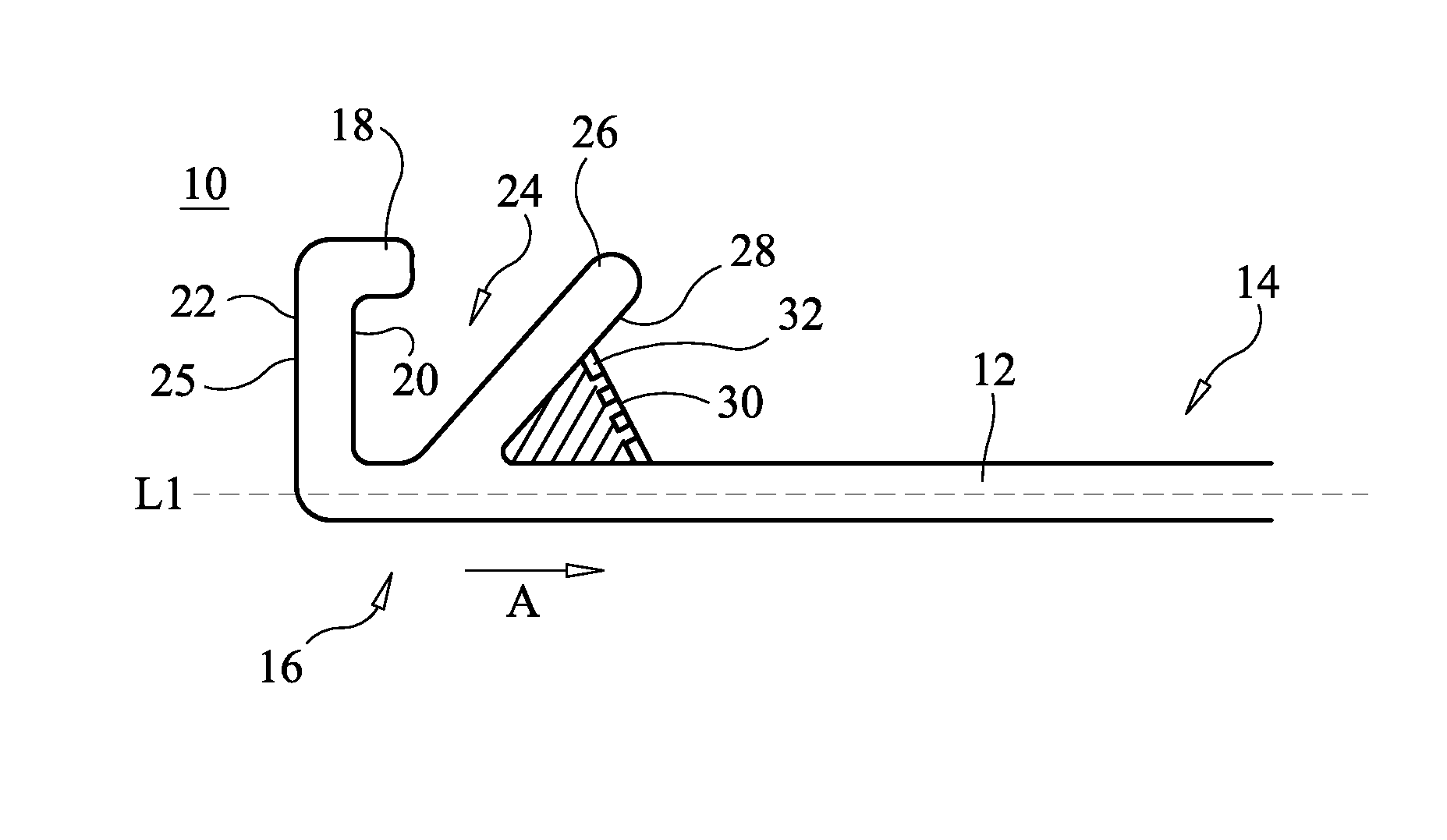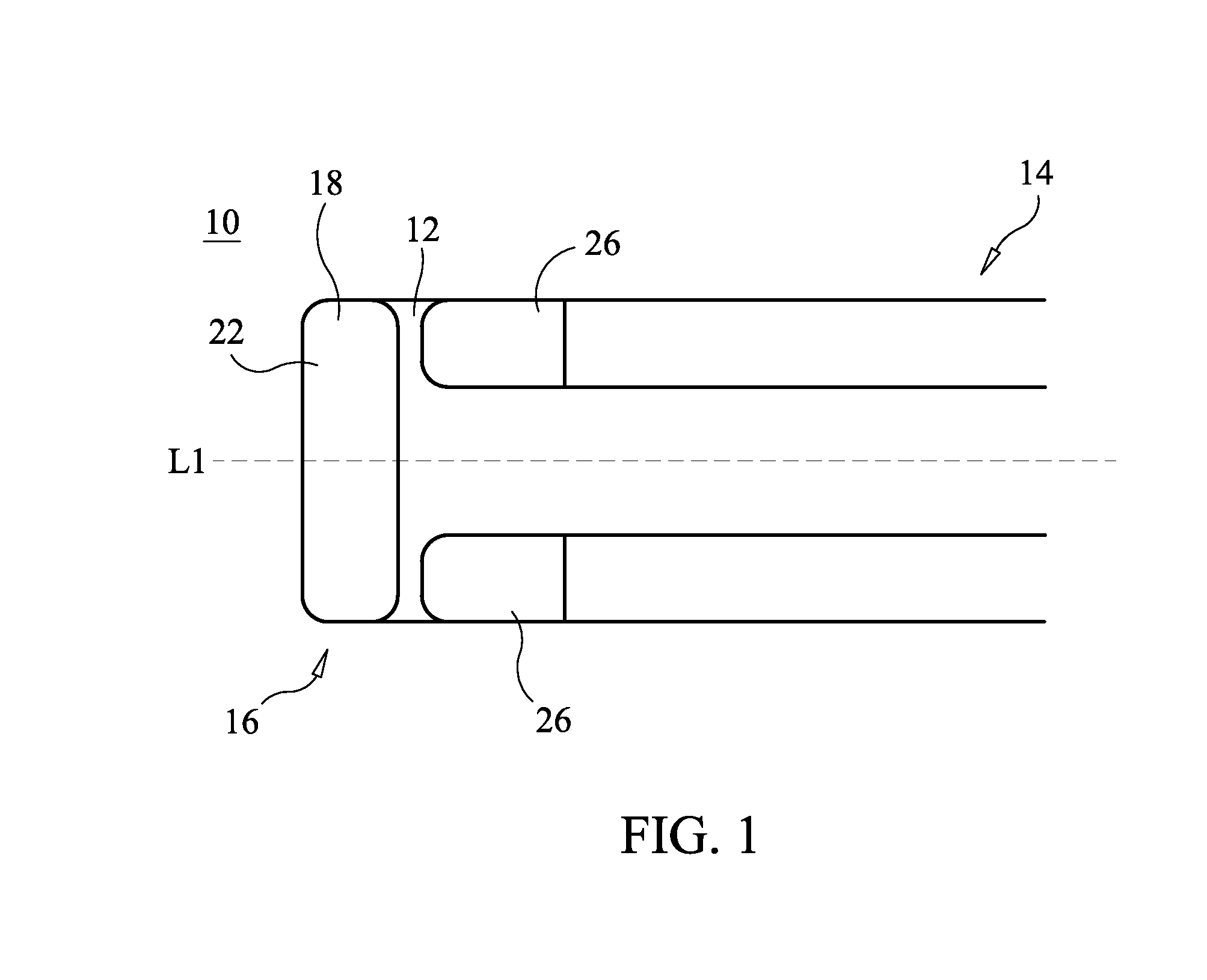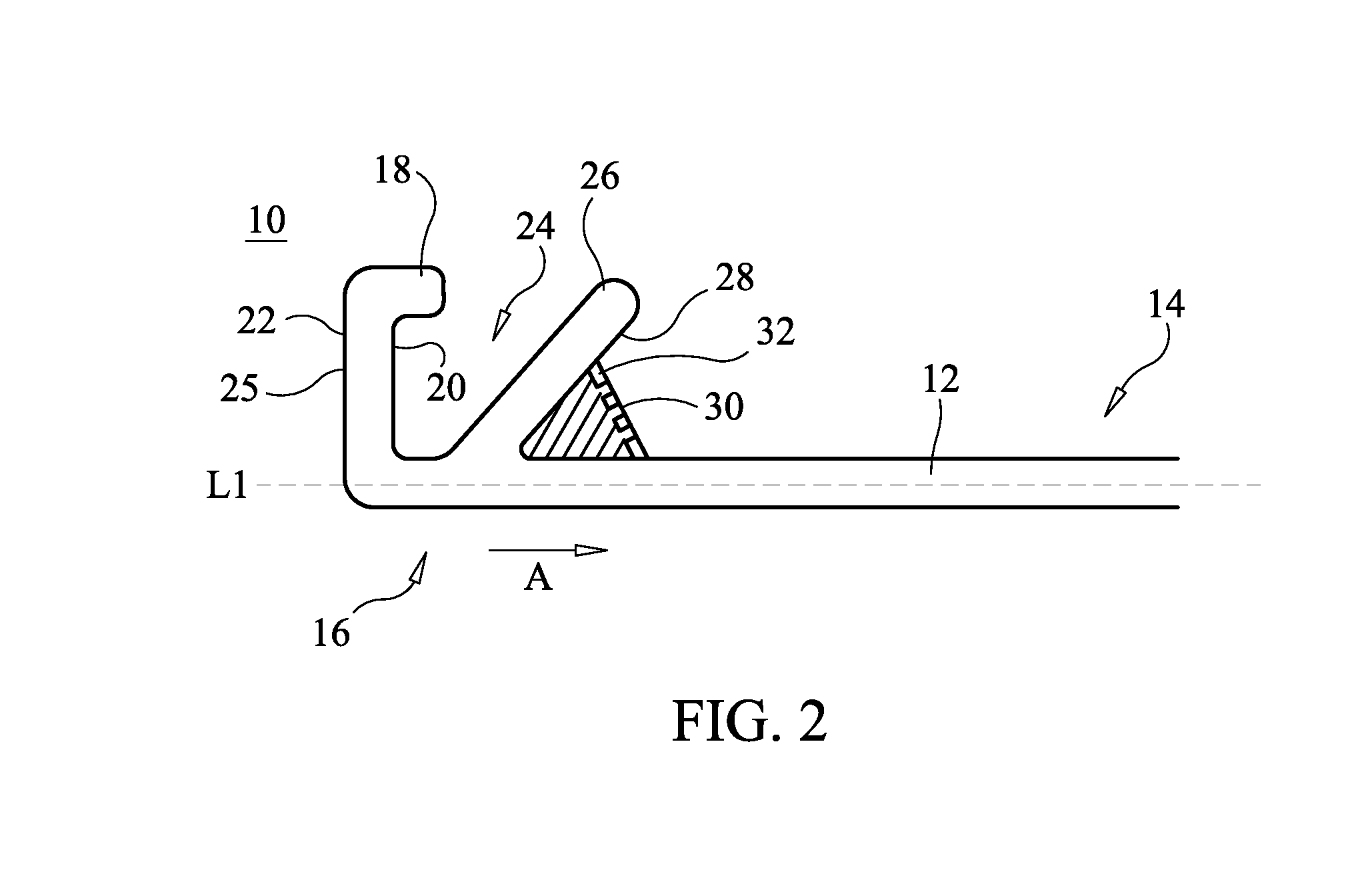Surgical cutting device having a blunt tip for protecting tissue adjacent targeted tissue and method for use thereof
a cutting device and target tissue technology, applied in the field of surgical cutting devices and methods, can solve the problems of inability to duplicate other treatment methods, inability to perform minimally invasive procedures in nerves and/or soft tissues such as the spine or the breast, and difficulty in performing standard scissors and scalpels. , to achieve the current at the cutting electrode of sufficient density to initiate a cut, and the effect of reducing the difficulty of achieving the effect of a cutting electrod
- Summary
- Abstract
- Description
- Claims
- Application Information
AI Technical Summary
Benefits of technology
Problems solved by technology
Method used
Image
Examples
Embodiment Construction
[0022]Devices for efficient severing or cutting of a material or substance such as nerve and / or soft tissue suitable for use in open surgical and / or minimally invasive procedures are disclosed. The following description is presented to enable any person skilled in the art to make and use the present disclosure. Descriptions of specific embodiments and applications are provided only as examples and various modifications will be readily apparent to those skilled in the art.
[0023]Lumbar spinal stenosis (LSS) may occur from hypertrophied bone or ligamentum flavum, or from a lax ligamentum flavum that collapses into the spinal canal. LSS can present clinical symptoms such as leg pain and reduced function. Conventional treatments include epidural steroid injections, laminotomy, and laminectomy. Surgical interventions which remove at least some portion of the lamina are usually performed through a relatively large incision, and may result in spinal instability from removal of a large porti...
PUM
 Login to View More
Login to View More Abstract
Description
Claims
Application Information
 Login to View More
Login to View More - R&D
- Intellectual Property
- Life Sciences
- Materials
- Tech Scout
- Unparalleled Data Quality
- Higher Quality Content
- 60% Fewer Hallucinations
Browse by: Latest US Patents, China's latest patents, Technical Efficacy Thesaurus, Application Domain, Technology Topic, Popular Technical Reports.
© 2025 PatSnap. All rights reserved.Legal|Privacy policy|Modern Slavery Act Transparency Statement|Sitemap|About US| Contact US: help@patsnap.com



